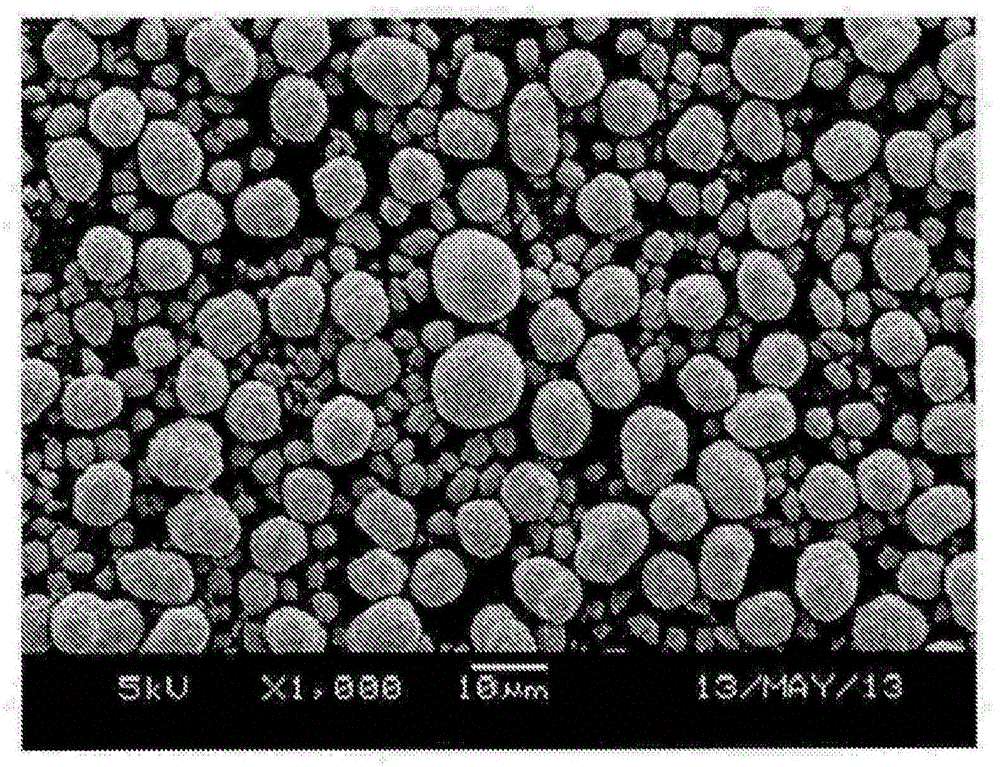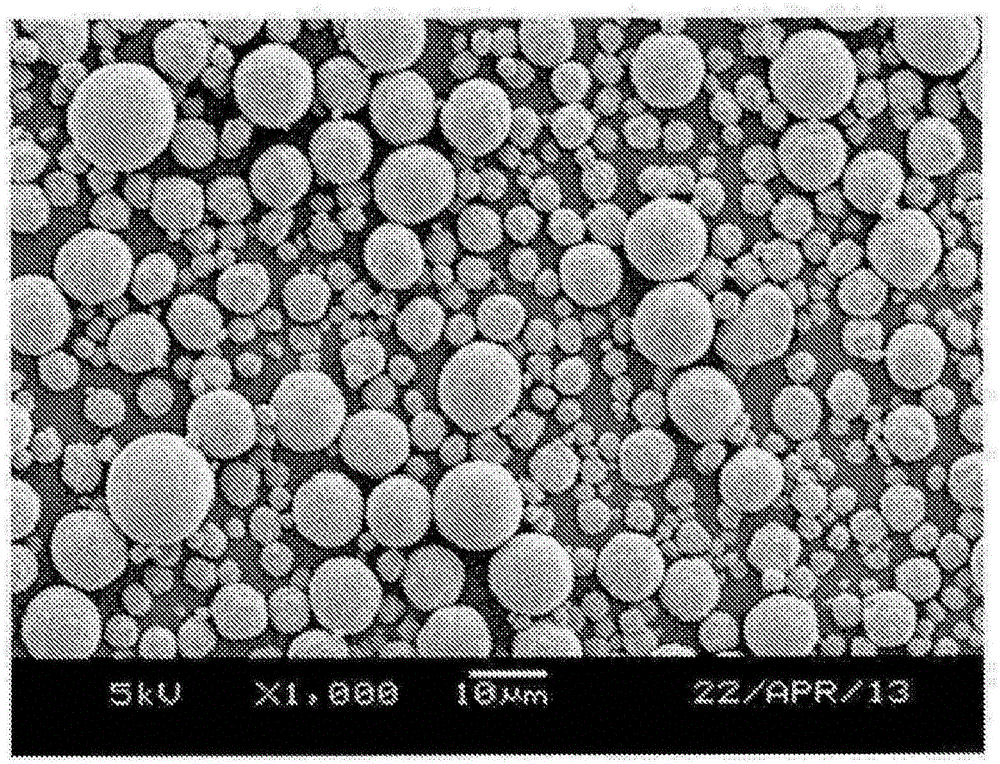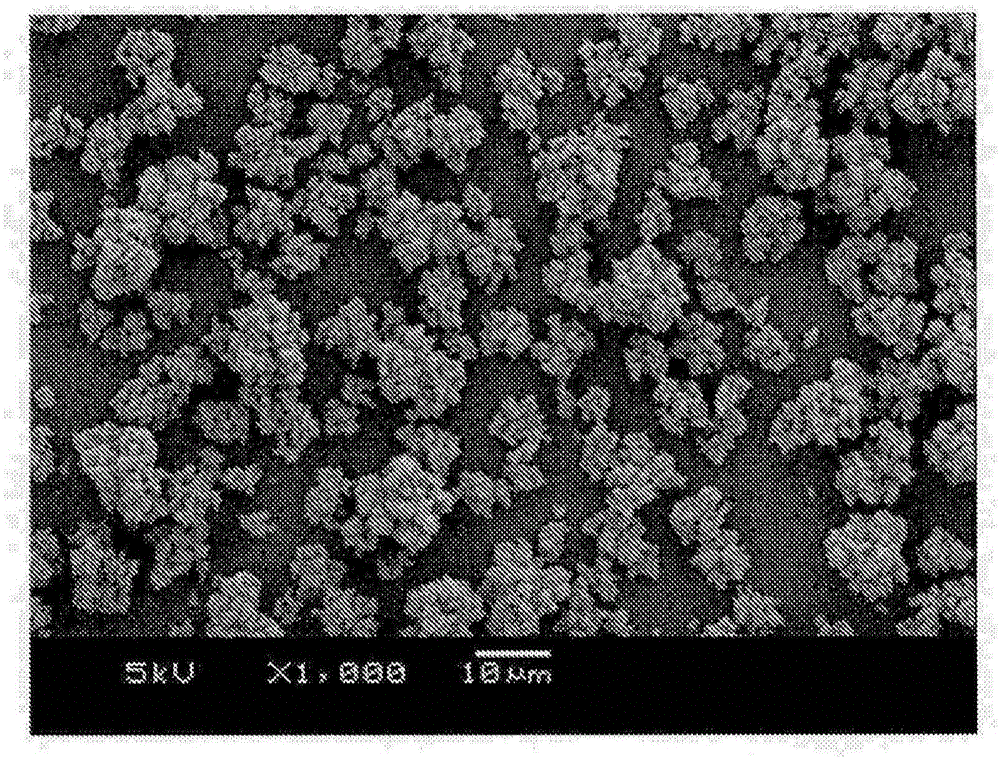Nickel-manganese composite hydroxide particles, method for producing same, positive electrode active material for nonaqueous electrolyte secondary batteries, method for producing positive electrode active material for nonaqueous electrolyte secondary batteries, and nonaqueous electrolyte secondary battery
A technology of composite hydroxide and positive active material, applied in the direction of active material electrodes, secondary batteries, nickel compounds, etc., can solve problems such as unrealistic, and achieve improved filling, good battery capacity and cycle characteristics, and improved circularity. degree of effect
- Summary
- Abstract
- Description
- Claims
- Application Information
AI Technical Summary
Problems solved by technology
Method used
Image
Examples
Embodiment 1
[0165] a) Fabrication of Composite Hydroxide Particles
[0166] First, nickel sulfate hexahydrate and manganese sulfate heptahydrate were dissolved in water so that the molar ratio of nickel and manganese was Ni:Mn=63:37, and the total concentration of nickel and manganese was prepared as a raw material aqueous solution of 2 mol / L. On the other hand, water was added to the upper limit of the reaction tank with a capacity of 60 L to the overflow, and the temperature in the tank was heated to 40° C. using a water bath. Simultaneously, nitrogen gas was introduced into the reaction tank at a rate of 20 L / min, and the inside of the reaction tank was adjusted to an inert environment (oxygen concentration: 0.2% by volume).
[0167] Then, while stirring the water in the reaction tank, the raw material aqueous solution, 25% by mass ammonia water, and 25% by mass aqueous solution of sodium hydroxide were continuously supplied to form a reaction aqueous solution. At this time, while con...
Embodiment 2~5
[0187] Except by adjusting the ammonium ion concentration and the pH value in the reaction tank, thereby the nickel ion concentration is controlled to the value shown in Table 2, carry out in the same way as in Example 1 to obtain composite hydroxide particles and positive electrode active materials. Make an evaluation. The results are shown in Table 3 and Table 4.
Embodiment 6
[0189] Except introducing nitrogen gas into the reaction tank at a rate of 3.0 L / min, and adjusting the oxygen concentration to 3.0% by volume, the composite hydroxide particles and positive electrode active material were obtained and evaluated in the same manner as in Example 2. The results are shown in Table 3 and Table 4.
PUM
| Property | Measurement | Unit |
|---|---|---|
| density | aaaaa | aaaaa |
| particle size | aaaaa | aaaaa |
| thickness | aaaaa | aaaaa |
Abstract
Description
Claims
Application Information
 Login to View More
Login to View More - R&D
- Intellectual Property
- Life Sciences
- Materials
- Tech Scout
- Unparalleled Data Quality
- Higher Quality Content
- 60% Fewer Hallucinations
Browse by: Latest US Patents, China's latest patents, Technical Efficacy Thesaurus, Application Domain, Technology Topic, Popular Technical Reports.
© 2025 PatSnap. All rights reserved.Legal|Privacy policy|Modern Slavery Act Transparency Statement|Sitemap|About US| Contact US: help@patsnap.com



